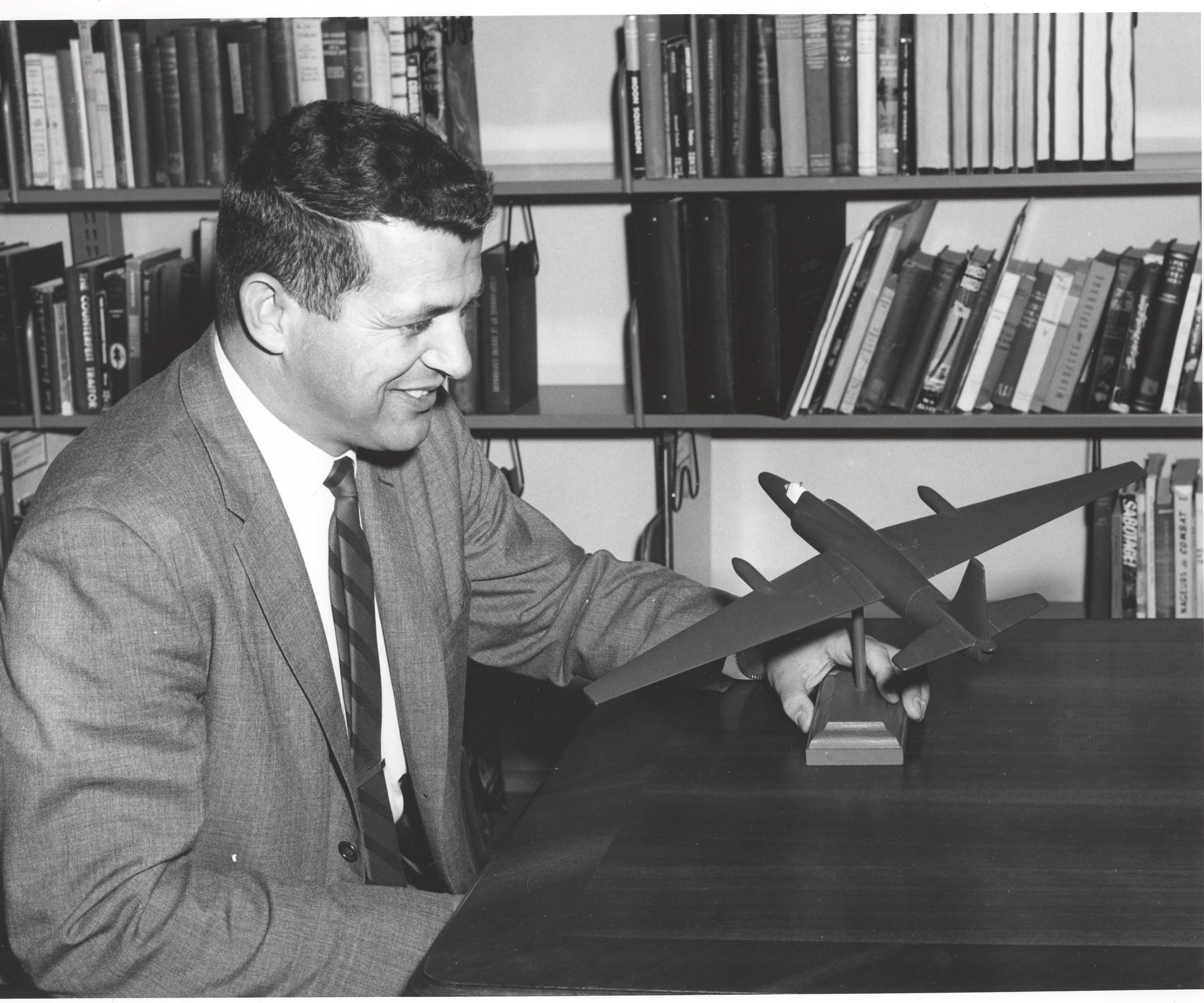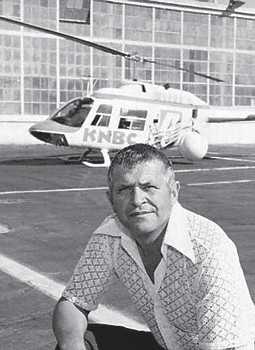Fifty-five years ago this May, Francis Gary Powers was piloting a U-2 on a reconnaissance mission for the Central Intelligence Agency when he was shot down over the Soviet Union. This flight was to be the first U-2 flight across the whole of Russia; it turned out to also be the last. Powers was the most experienced U-2 pilot, having flown more flights than anyone else in the program. He was 30 years old.
Powers’ final flight was postponed three times due to bad weather. These delays resulted in his original plane being grounded for a maintenance check. Instead, he flew a U-2 with a reputation for malfunctioning. Powers lacked confidence in this particular plane, so when he was offered a poison pin concealed in a silver dollar to take along on his flight, he agreed. He had never accepted the offer before.

On the morning of May 1, 1960, Powers was up well before the sun began its morning ascent. Flight preparation required a pilot to don his airtight, partial-pressure suit and begin the ‘prebreathing’ process, which lasted for two hours. This process ensured the pilots would not get the bends. At 5:20am Powers climbed into the cockpit and waited for the signal for takeoff. Because the partial-pressure suits lack ventilation, perspiration is constant, compounded now by the scorching sun that had finally made its appearance. But the temperature was about to drop. After an hour of baking on the runway, Powers was cleared to start his mission. He soared to the sky where the outside temperature fell to sixty degrees below zero.
The malfunctions of this U-2 could have altered the course of history had they occurred earlier in the flight. Powers was thirteen hundred miles inside of Russia when the autopilot broke down. He decided to fly the plane manually for the duration and to complete his mission. Had this failure occurred one hour earlier, Powers would have turned around.

The young pilot had been flying for almost four hours when he heard a dull thump, the aircraft lurched forward, and there was a bright orange flash from a nearby surface-to-air missile. The plane’s right wing began to droop and the nose started to go down. Powers tried to correct it, but the plane continued its downward trajectory. Powers was uncertain if the control cable had been severed or if the tail was gone. He was certain, however, that he no longer had control of the plane.
Powers initial reaction was to pull the destruct switches, but he decided he’d better secure an exit plan for himself first. This, however, was proving difficult as the g forces had hurled him to the nose of the plane, which was spinning tail first towards the earth. Powers thought of ejecting but realized, in his current position, he likely would have had both off his legs cut off while trying to escape the plane.
On the verge of panic, Powers decided he would climb out of the plane. The whirling aircraft had passed thirty-four thousand feet when he removed the canopy. He took off his seat-belt, which sent him flying halfway out of the aircraft. His face plate frosted over rendering him visionless. Powers tried to get to the destruct switches twice but, realizing time was running out, he began kicking frantically and miraculously the oxygen hoses that were holding him hostage in the U-2 broke and freed him from the spiraling plane.
Suddenly, all was silent, except for the rustling of material as the chute opened and settled in the wind. Powers hung in the air desperately trying to comprehend what had just happened and trying to assess his current situation. He was fifteen thousand feet above the Soviet Union and the ground was growing ever closer. As he clutched the straps of his chute, he saw a piece of the plane float down past him.
He was nearly to the ground when he noticed a car driving down a dirt road that seemed to be following his path. During his final moments of solitude, Powers considered using the poison pin. However, he clung to the hope that maybe, just maybe, there was a chance he could somehow escape. Realizing the silver dollar would most likely be confiscated, he removed the pin and placed it in his pocket. He tossed the coin into the field below.
Powers managed to avoid landing on a tractor, in a lake, and on crackling power lines. Children came running out to see the spectacle. Once grounded the two men from the vehicle gathered Powers and his chute and drove him to a village. Powers was searched, and he watched as people began arriving with pieces of his plane. One man, he noticed, was carrying a reel of film.
Powers was taken to Sverdlovsk where the whole town was in celebratory mode: It was then that he remembered May 1st was a Communist holiday. Powers explained to the men, who he believed were KGB, that he had lost his direction and had accidentally flown over the border. At this point more wreckage from the plane was brought in, to include a map that clearly outlined Powers’ intended course. He dropped his cover story and admitted he was a civilian pilot employed by the CIA.
Powers was then taken to Lubyanka in Moscow, headquarters of the KGB. He was again searched and this time interrogated for three hours. Powers decided he would answer truthfully what he could. He would give the men information he was sure they already had or knew they could easily find. By coming across as cooperative, he believed he could more easily withhold classified information.

Following the interrogation Powers was given a medical exam and then taken to a prison cell about eight feet wide and fifteen feet long. He was exhausted. He had escaped a downing plane, endured transportation to several facilities—to include a three hour plane ride to Moscow (not the best recuperation method for a victim of a plane crash)—and undergone harsh interrogations, all while lacking the ability to communicate with his captors. Powers was uncertain of his fate, but he believed that at any moment he would be executed. He was alone now in his cell, but with the uneasy sense that he was being closely watched. He laid down to spend the night in restless slumber, hoping to wake from this hellish nightmare.
For several weeks Powers was questioned eleven hours a day, seven days a week. He was taken to see the wreckage of his plane and questioned about every piece. It was seeing the plane that confirmed his belief that the plane had not taken a direct hit, but had been disabled by a near-miss.
Powers was tried for espionage under Article 2 of the Soviet Law on Criminal Responsibility for Crimes Against the State. His appointed defense counsel could barely speak English. The trial began on his thirty-first birthday. He was sentenced to ten years of confinement and taken to Vladimir Prison. He was given the choice of a cellmate or solitary confinement. He opted for a cellmate. He and his new cellmate, Zigurd, became close friends.
On February 10, 1962, one year, nine months and ten days after his capture, Powers was freed. He was exchanged for Colonel Rudolf Abel, a Soviet spy convicted in the US of espionage. They were traded at the Glienicke Bridge in Berlin — known as the Bridge of Spies. Before Powers walked across the bridge, the Soviet consular representative said to him, “The next time you come to see us, come as a friend.” When the signal was given, Powers and Abel crossed the bridge, barely acknowledging each other as they passed in the middle.

As it turns out, Gary Powers’ father was responsible for initiating the exchange. One month after his son was captured, he reached out to Abel at the federal penitentiary and suggested a swap. Abel’s attorney, New York lawyer and OSS counsel James B. Donovan, had fought against the death sentence for this exact purpose, hoping that one day the US might have use for Abel in an exchange for an American. Milan Miskovsky, an Agency lawyer, worked together with Donovan to negotiate the trade with the Soviets.
Powers returned to the US amongst great controversy. Many believed he should have destroyed the photographic devices on his plane or made use of his poison pin. People were concerned about what he had told the Russians during his interrogations. Pressure mounted and Powers submitted to a public hearing before Congress. It lasted only ninety minutes. He was cleared by the US government of all allegations of misconduct after his repatriation.
Powers continued to work for the CIA, instructing officers on coping mechanisms when being interrogated. Itching to fly again, he accepted a position with Lockheed as a U-2 test pilot and published a memoir of his U-2 experience titled, “Operation Overflight: A Memoir of the U-2 Incident.”
In 1976, he became a helicopter traffic pilot-reporter for KNBC News Channel 4. On August 1, 1977, he was conducting a traffic report over Los Angeles when his helicopter crashed due to a faulty fuel gauge. Powers and his cameraman were both killed. At his funeral, Powers’ young son was approached by a mysterious man. The man put a coin in his hand and said that “Zigurd” wanted him to have it. Powers’ son looked down to examine the coin, running his fingers around the edge, and when he looked back up, the man had vanished.

Details of the U-2 program were declassified in 1998, increasing the public’s recognition of Powers’ service and heroism. Director of Central Intelligence George J. Tenet posthumously awarded Powers a CIA Director’s Medal in 2000. In April 1965, Powers received the Intelligence Star, a rare award given by the CIA to officers, “for a voluntary act or acts of courage performed under hazardous conditions or for outstanding achievements or services rendered with distinction under conditions of grave risk.”
The Cold War lasted another thirty-one years after Powers was shot down.

